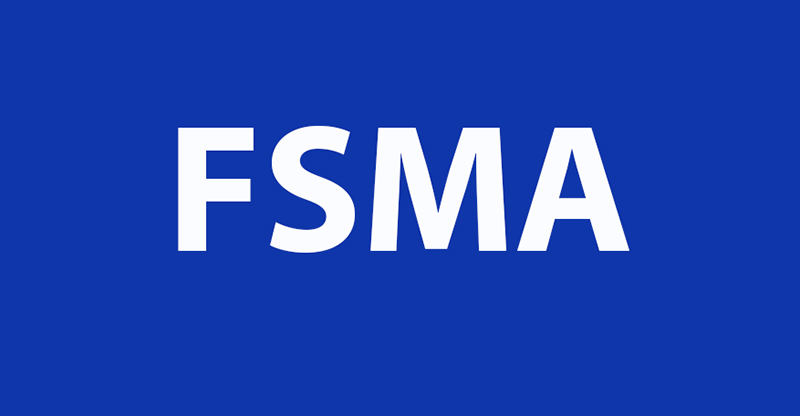The Final Rule on Preventive Controls for Animal Food (21 CFR 507) was released in September 2015. The first compliance dates for CGMPs arrived in September 2016. All facilities that manufacture, process, pack or hold animal food for consumption in the United States are required to comply (see Figure 1 information on compliance dates.) Non-compliance is considered a prohibited act, but nonetheless this rule has not received the same amount of press as its human food counterpart. We must begin to spread awareness, because this rule has the potential to fundamentally change the pet food and animal feed industries over the next four years. Unlike human foods, animal food is typically intended to be fed as a sole source of nutrients. Thus, the regulation is fairly comprehensive and strict.
| Business Size |
CGMP Compliance Date |
PC Compliance Date |
| Business other than small and very small |
One year |
Two years |
| Small business (fewer than 500 full-time employees) |
Two years |
Three years |
| Very small business (averages less than $2.5 million per year, during the three-year period preceding the applicable calendar year in sales of animal food + market value of animal food manufactured, processed, packed or held without sale |
Three years |
Four years except for records to support its status as a very small business
(January 1, 2017) |
| Figure 1. Compliance dates for CGMPs and PCs for Animal Food (from fda.gov). |
During the 2016 Food Safety Consortium, Debby Newslow and Erika Miller will instruct: FSPCA Preventive Controls for Animal Food (21CFR507) Training | REGISTER FOR THE WORKSHOPSimilar to the Preventive Controls for Human Food regulation (21 CFR 117), there are two parts to the Animal Food rule: Current Good Manufacturing Practices (CGMPs) and Preventive Controls. Figure 2 provides more detail on the Subparts of the Regulation. Also, animal food covered by specific CGMP regulations must still comply with those regulations (specifically low-acid canned food and medicated feed).
Those who have taken a Preventive Controls Qualified Individual (PCQI) course will notice the remarkable similarity to the structure of the Human Food Rule. This is by design, for our animals are often a part of the family for whom we want to provide the highest level of quality and safety possible. That said, there is some overlap between the two regulations. For instance, when human food byproducts are diverted to use in pet food or animal feed, the human food CGMP rules apply to that food intended for use as animal food.
| Subpart |
Topic |
| A |
General Provisions |
| B |
Current Good Manufacturing Practice |
| C |
Hazard Analysis and Risk-Based Preventive Controls |
| D |
Withdrawal of Qualified Facility Redemption |
| E |
Supply Chain Program |
| F |
Requirements Applying to Records that Must Be Established and Maintained |
| Figure 2. Subparts of 21 CFR 507, Current Good Manufacturing Practice, Hazard Analysis, and Risk-based Preventive Controls for Food for Animals. |
What Does this Regulation Mean for the Pet Food Industry?
Large companies that produce commercially available pet foods available in grocery stores and big box retailers (such as Pedigree, Iams, Nutro, Purina, etc.) are typically already compliant to a voluntary GFSI-approved food safety scheme (FSSC 22000, SQF, etc.). These companies already have most necessary processes in place to be compliant. There may be adjustments related to terminology, documentation, records and hazard analysis expansions to include mention of Preventive Controls. However, most of the work has been completed already and only clarifications, in most instances, should be required.
However, there are many small “mom-and-pop” type establishments making niche pet food with high-quality, organic ingredients that may not have much knowledge about this regulation. These types of manufacturers want to make the best, safest, highest quality product they possibly can, but without knowledge and education, they may not know the questions to ask to point them in the right direction. When an inspector arrives and asks to see the written hazard analysis, even a high-quality niche processor may end up with the deer-in-the-headlights stare if they do not understand the question. This regulation has the potential to significantly impact their business, but in a small business most folks wear many hats, and it is not always possible to just jet away for a few days to attend a specialized training class.
It was indicated during our Lead Trainer course that FDA is developing a clear proactive approach to their inspections related to this rule. Our Lead Trainer courses also emphasized that the inspectors’ focus will be on the reasonably foreseeable hazards and potential hazards to ensure that each is in control. Control can be achieved through a Preventive Control or some other process, such as a GMP based pre-requisite program.
In order to be as effective and efficient as possible, it is critical that an organization understands the requirements of this regulation. For example, the Food Allergen Labeling and Consumer Protection Act (FALCPA) does not apply to food for animals, nor are there allergen provisions included in 21 CFR 507. Certainly there are specialty manufacturers that make special recipes for those pets that may have an allergy or sensitivity (i.e., wheat, rice, etc.); however, this is completely different than the required approach to allergens for the production of human food. The pet food or feed manufacturer is not bound by these restrictions. However, an uninformed processor may take it upon itself to redesign a label to include an allergen declaration assuming that requirements for human food also apply to them. This could result in a great expense for graphic design, reprinting, disposal and wasting of previously printed labels, and of course the time spent on the project.
Measuring effectiveness is one oft-overlooked part of a mature and robust food safety program. Even experienced managers sometimes overlook this crucial step, so it is unlikely that most people would be able to come up with the concept on their own without assistance. If a facility has a rule in place that people must wear gloves, but do not have the experience to train on proper glove use and the reasons gloves are worn, confusion and improper glove use will result. This results in the company wasting money on providing the gloves in the first place. No matter how conscientious a program is, it still requires effective programs for identifying and maintaining records. These provide evidence of compliance with the regulation. There must also be documents in place that define the operational requirements and explain how to demonstrate effectiveness.
Industry representatives also must fully understand how to distinguish between Current Good Manufacturing Practices (CGMPs), other prerequisite programs and preventive controls, and to determine where they fit into their operation and the regulatory framework. The logic used to determine whether a specified hazard is reasonably foreseeable is based on science, experience and education. There are different record-keeping requirements for different types of controls.
It is critical to the process to ensure that reliable resources are used to develop the foundation of the program. This is considered so important that the PCQI Preventive Control for Animal Food material references examples of credible resources in each chapter. Examples of these include trade associations, universities, industry-focused events, relevant informational emails and webinars. We have experienced first-hand that expanding a professional network using these types of resources increases the rate of attrition for knowledge when a sink-or-swim situation is presented.
Keep in mind that an operation must take an active role in defining, implementing and maintaining its food safety program. It is usually recommended that a consultant knowledgeable in your food sector be engaged to assist. However, the word of the day is “assist”. If the consultant writes a turnkey program, then whose program is it? And better yet, where are they going to be when you are in an audit and can’t explain (justify) what is stated in the program?









